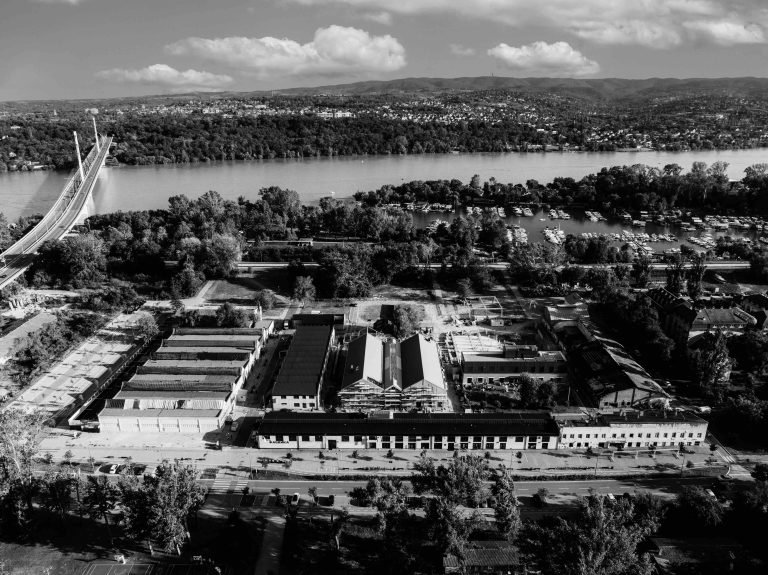The cult Novi Sad beach, one of the best-kept beaches along the entire Danube, has been sung about in many songs, and is also one of the reasons why citizens of Novi Sad like to say ‘The Danube is my sea.’
The tradition of swimming and enjoying the sun on the river banks has been present among the citizens of Novi Sad for centuries now – the first written proof of the local beach lovers dates back to 1827. During that period, there were beaches on the Srem side, so the local fishermen had to transport those who wanted to visit the beach to the other bank of the Danube, taking the opportunity to sell some crayfish to the swimmers (a type of crayfish that hasn’t been seen in these regions for a long time now). The first Novi Sad beach was located right next to Brukšanac (Bridgehead, part of the Petrovaradin Fortress that doesn’t exist today). However, having lots of whirlpools, the Danube was fast and not great for swimming, so the citizens of Novi Sad looked for a better location. They found one just one and a half kilometres upstream, near the Fisherman’s Island. Today, here lies the famous Štrand beach.
How did Štrand originate?
It opened its doors to people officially in 1911, but the locals had been using the beach long before that. In the middle of the 19th century, there was a sandbar on the left bank of the Danube, which the locals called Poloj. The sandbar was used as a watering place for domestic animals. As Novi Sad grew bigger, so did the need for a big and arranged beach. Of all locations, Poloj was most suitable due to its woody terrain which gave enough space for kids, men and women to have separate swimming spots. The first swimmers at Poloj date back to 1856, when a theft was reported. Apparently, someone stole the visitors’ belongings lying on the bank.
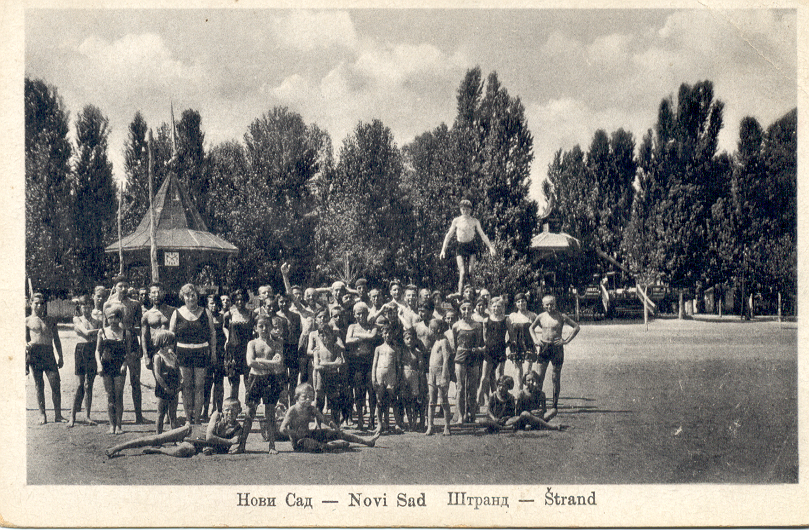
Poloj was soon after changed into ‘Štenglova dunavska kupališta,’ the so-called schwimmschule (De. swimming school). On the Danube, there was a huge wooden raft with sheet metal barrels tied to strong boulders. There were 100 cabins and three double pools on the raft, with separate sections for men and women. The biggest pool dimensions were 20×10 metres, with swimming exhibitions being held there. The second pool was intended for non-swimmers, while the third one was for the kids. Swimming teachers kept children floating on the water with the help of a rope and floating sticks. The swimming season at the schwimmschule started on 15 May and lasted until September.
Those who couldn’t afford schwimmschule sought refreshment at the numerous wild beaches.
What did people eat and drink at the Štrand Beach?
Novi Sad published the technical description of Štrand in 1912, and since then, the 500 meter-long and 60 meter-wide coast has been called by the name ‘Štrand.’ One year later, the joint-stock company of Štrand took on the obligation of developing the beach. The quality of the beach itself developed rapidly, as well as the number of services available to visitors. That summer, three more rows of wooden cabins were built, including kiosks, a hair salon, a juice shop and an ice cream parlour where you could buy the very popular cake called ‘Polar’, or the ‘amerikan korneta,’ (en. American cone) made by Imre Haker in Jevrejska Street.
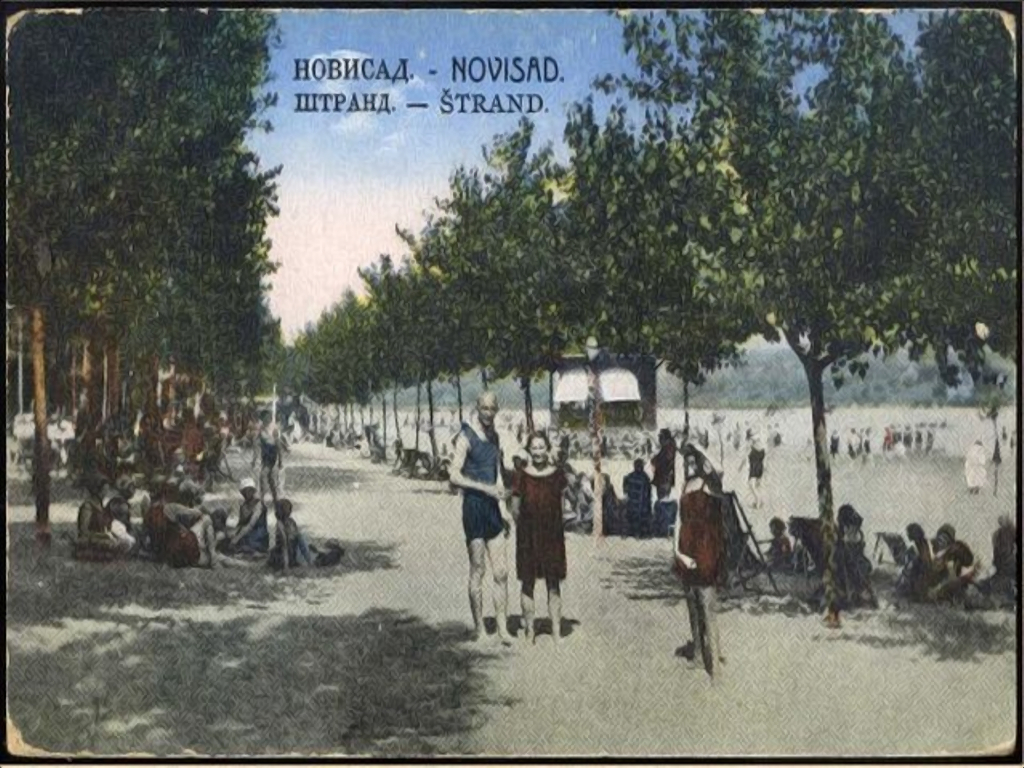
Štrand had got its ticket office at the main entrance in 1920, as well as rooms for police officers on duty and emergency care, bike racks, showers, gazebos, trampolines, inflatable bouncers, ties for renting ships, pavilions for military music and a large wooden restaurant.
The beach cared about maintaining greenery and dense trees, it offered great comfort and enviable impression of elegance. Owning a cabin at the beach or buying tickets in advance was something only wealthier citizens could afford. The cabins were arranged in three rows, and those in the first line, with tables and benches, were the most expensive. Each row was taken care of by a cleaning lady who kept a little table with keys of the cabins she was responsible for. The cleaning ladies maintained order and hygiene, and would even bring a bucket of water where people would wash their feet before leaving the beach; and they were given tips for that. The exclusive first and less prestigious second row of cabins were separated by a series of masonry stoves and pump wells. Some visitors cooked and heated their meals on the stoves, while they cooled bottles of white coffee and watermelons next to the well. The testimony to the legendary integrity of Novi Sad people is the incredible fact that nothing was ever stolen, not one watermelon nor a bottle of coffee.
Ever since it was founded, Štrand was famous for its diverse sport activities, such as ‘picigin’ (citizens of Novi Sad like to say the game originated at the Štrand beach), ‘kečket’ – tennis played using only bare hands, ‘kurendol’ – tennis played using feet, and lastly – tennis played using heads, which emerged on the Danube banks.
Beach Fashion
At a time when great deal of attention was paid to public morality, visitors had to comply with regulations and restrictions mostly regarding dressing, or rather undressing. A strict police officer was in charge of these rules; he used to measure the length of women’s skirts on their bathing suits, but also forbid men from being overly underdressed.
The length of skirts and low necklines were strictly regulated, whereas men had to wear swimming trunks with an upper part too. Showing skin wasn’t so popular until the Second World War. Swimsuits people used to wear at the Štrand beach don’t look anything like swimsuits today – they were covering much more than they were uncovering. When you bought a ticket, you would get a swimsuit as well, but most girls brought their own. These Puritan criteria were lowered over time, so that the gentlemen first tolerated unbuttoning one strap, and later wearing swimming trunks that were not ‘too cut.’ Of course, even in strict times like that, one found ways to have fun and flirt. At first, some didn’t like the awkward moment of ladies swimming together with men, but, you know, they got over it later. However, some rules regarding maintaining order and ethics stuck for a long time. Everyone had to obey the strict rules, thus, any woman with bare breasts was banned from the beach for life. It happened to a girl who decided to sunbathe topless at a more isolated place, but it nevertheless caused great attention and she was thrown out.
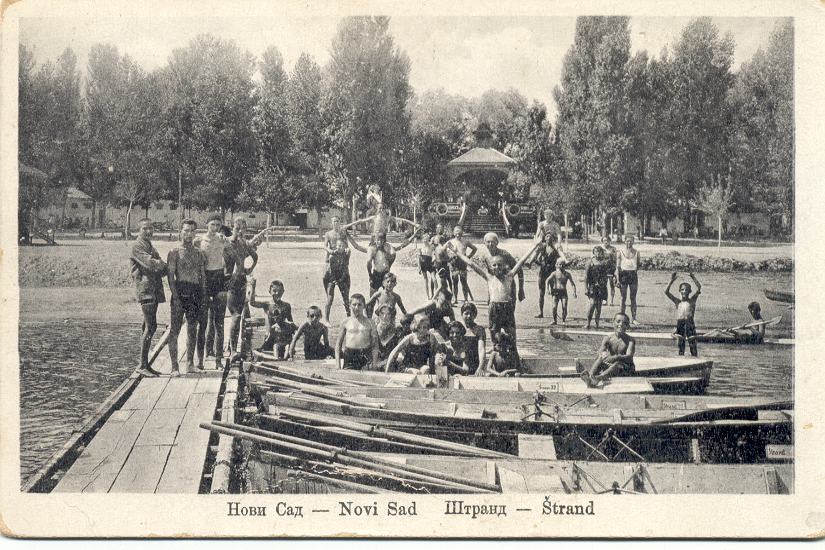
In 1930, Štrand was around 700 metres long, 60 metres wide and had 70 cabins. It was estimated it could host around 10.000 visitors. However, the number of people living in Novi Sad back then was hardly 40 thousand people. Prominent poets, politicians, writers, artists and visitors of this city often visited Štrand. Miloš Crnjanski spoke of Štrand as the most important ‘landmark’ of Novi Sad.
There was a nice wooden restaurant people enjoyed eating in, until it got destroyed in the fire in 1964. All of the objects, including the restaurant, were made out of wood, so no wonder it burnt so easily. The next year, in 1956, the Danube flooded and destroyed everything. That year, Štrand looked the same as it looked at the beginning of the 20th century.
Trams and Bicycles
Trčika – a small electric tram with three wagons was getting people to Štrand for years. Yellow electric trams appeared on the streets of Novi Sad on 30 September, 1911, when they replaced the omnibuses pulled by horses. On 30 September, 1958, the trams were replaced by buses. Trčika’s first stop was in Železnička Street, and the last one was in front of Štrand. However, Trčika was more of an attraction for the wealthier citizens than a means of transport that would get thousands of people to Štrand – people were going to Štrand either on foot or by bike. Bike racks were located in front of the Štrand beach, stretching all the way from Fruškogorska Street to the Štrand’s main entrance, which was enough space for around 2 or 3 thousand bikes.
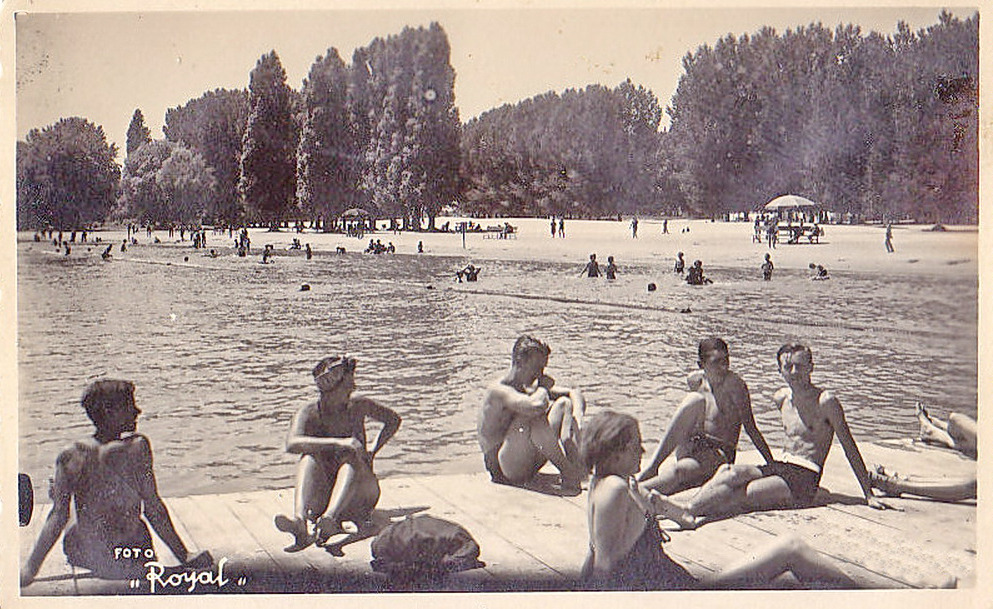
The older school kids spent their summer vacations at Štrand. People used to wait in the line at 8 a.m. for the beach to open, while at night the guards literally had to make them leave at 7:30 p.m. One of their favourite games was riding slippery logs overgrown with algae and knocking down opponents from the logs. People were either sitting or lying on the sand itself, towels and beach chairs got popular only later, during the 70s. There wasn’t any grass, so people had to walk on hot sand in order to get to shade of the Cottonwoods. At a time of great heat, when Štrand was filled with people, a mist of fine sand swirled over the beach, spinning around thousands of feet.
For the citizens of Novi Sad, Štrand was, and still is, the local institution, while visiting the beach is a unique social event.
Author: Author: Author: Ljiljana Dragosavljević Savin, MA in History
Photo: courtesy of Facebook page Stare fotografije Novog Sada



